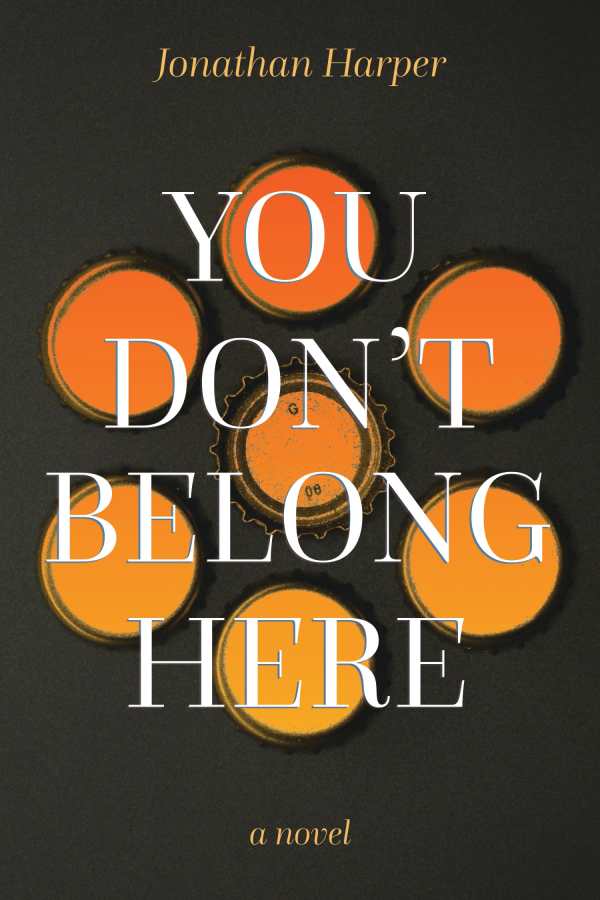You Don't Belong Here
Avalanches of anxiety and poor decisions bury two reunited men in the compelling novel You Don’t Belong Here.
In Jonathan Harper’s novel You Don’t Belong Here, a bisexual writer stumbles because of the ideological troubles of a small town.
Morris is a guest at a writer’s retreat in a town that’s shadowed by a massive hillside Jesus statue. He’s been working on his ill-defined fantasy novel and is set to return to his long-term partner, Yasmin, in Washington, DC. On his last night in town, he stops for a drink at a popular watering hole and encounters a specter from his past: Henry, his ex-friend and sometimes-lover, who is scarred and past his prime.
What follows is a series of mistakes, misunderstandings, and manipulations. Morris becomes trapped in the town, following Henry down a booze-soaked rabbit hole. Beneath the town’s surface, he meets a mysterious circle of gay residents, ringleadered by a domineering police officer and haunted by an insidious strain of homophobia. And the Tunnel—an image that appears and reappears throughout the book—becomes an effective extended metaphor in this journeying. It is “a vague feeling of uncertainty, an unquantifiable notion of danger or consequence.” The Tunnel expands and contracts—a headspace that beckons deeper into darkness, leading Morris to much trouble. The liminal nature that it suggests heightens Morris’s Sisyphean task of trying and failing to extract himself from an escalating situation. “Should I be here?” he asks more than once before plunging forward again. But for Morris, the only way out of the Tunnel is through.
The story stops and starts at regular intervals. Warnings of sinister forces under the town’s charming Americana façade abound, though their payoffs are minimal, and tense, critical scenes deflate without ceremony. Sections of dialogue and exposition dampen what tension is built. A pivotal moment depicting a religiously motivated homophobic attack suggests a coming crescendo, but then the story backslides. And the book’s tendency to overexplain its subtext is a further hindrance.
Though Morris is focal, he is much less interesting than the people around him—a fact made all the clearer by a brief, revealing aside from Henry’s point of view. In contrast, Henry is a compelling White Rabbit character—frustrating and charming in equal measures. The impishness of his college years, when he first met Morris, has since faded into spite. He has “never been happy except at the beginning and end of things” and exists in a perpetual state of spinning out, unable to recover from trauma. The malleability of Morris and Henry’s college relationship blurred the lines of intimacy, and Morris is a reminder of what Henry lost to his instability and capriciousness, causing Henry to react with resentment. And Yasmin is Henry’s foil. Intelligent and guarded, she acts as a logical counterweight to the two men’s impulsiveness. Her self-possession makes the others’ self-sabotage all the more cutting.
Avalanches of anxiety and poor decisions bury people in the novel You Don’t Belong Here, about a writer who stumbles into a compelling reunion.
Reviewed by
Luke Sutherland
Disclosure: This article is not an endorsement, but a review. The publisher of this book provided free copies of the book and paid a small fee to have their book reviewed by a professional reviewer. Foreword Reviews and Clarion Reviews make no guarantee that the publisher will receive a positive review. Foreword Magazine, Inc. is disclosing this in accordance with the Federal Trade Commission’s 16 CFR, Part 255.

